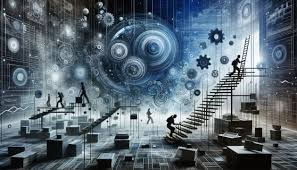Complexity

1. General Definition Complexity describes systems, phenomena, or problems characterized by multiple interacting components, unpredictability, and often emergent behavior. These systems resist simplification and require holistic approaches to understanding and managing. 2. Characteristics of Complexity a. Interdependence The parts or elements within the system are interdependent, meaning the behavior of one part affects others. This interconnectedness often creates cascading effects. b. Emergence Complex systems display properties or behaviors that are not present in their individual components but emerge from their interactions. For instance, consciousness arises from neural interactions in the brain. c. Nonlinearity Outcomes are not proportional to inputs, and small changes in one part of the system can lead to disproportionate effects elsewhere (butterfly effect). This makes prediction difficult. d. Dynamism Complex systems are dynamic, constantly evolving due to interactions among ...



